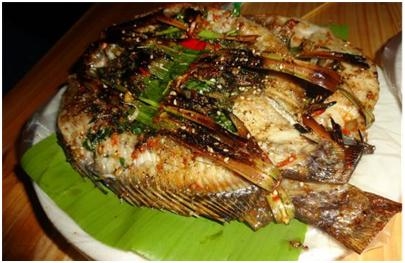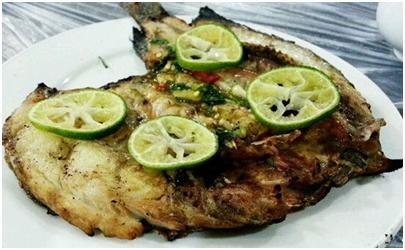COMP9444代做、代寫Python編程設計
時間:2024-07-04 來源: 作者: 我要糾錯
COMP9444 Neural Networks and Deep Learning
Term 2, 2024
Assignment - Characters and Hidden Unit Dynamics
Due: Tuesday 2 July, 23:59 pm
Marks: 20% of final assessment
In this assignment, you will be implementing and training neural network models for three
different tasks, and analysing the results. You are to submit two Python files and , as well as
a written report (in format). kuzu.pycheck.pyhw1.pdfpdf
Provided Files
Copy the archive hw1.zip into your own filespace and unzip it. This should create a directory ,
subdirectories and , and eight Python files , , , , , , and .
hw1netplotkuzu.pycheck.pykuzu_main.pycheck_main.pyseq_train.pyseq_models.pyseq_plot.pyanb2n.py
Your task is to complete the skeleton files and and submit them, along with your report.
kuzu.pycheck.py
Part 1: Japanese Character Recognition
For Part 1 of the assignment you will be implementing networks to recognize handwritten
Hiragana symbols. The dataset to be used is Kuzushiji-MNIST or KMNIST for short. The
paper describing the dataset is available here. It is worth reading, but in short: significant
changes occurred to the language when Japan reformed their education system in 1868,
and the majority of Japanese today cannot read texts published over 150 years ago. This
paper presents a dataset of handwritten, labeled examples of this old-style script
(Kuzushiji). Along with this dataset, however, they also provide a much simpler one,
containing 10 Hiragana characters with 7000 samples per class. This is the dataset we will
be using.
Text from 1772 (left) compared to 1900 showing the standardization of written
Japanese.
1. [1 mark] Implement a model which computes a linear function of the pixels in the
image, followed by log softmax. Run the code by typing: Copy the final accuracy and
confusion matrix into your report. The final accuracy should be around 70%. Note that
the rows of the confusion matrix indicate the target character, while the columnsindicate the one chosen by the network. (0="o", 1="ki", 2="su", 3="tsu", 4="na",
5="ha", 6="ma", 7="ya", 8="re", 9="wo"). More examples of each character can be
found here. NetLin
python3 kuzu_main.py --net lin
2. [1 mark] Implement a fully connected 2-layer network (i.e. one hidden layer, plus the
output layer), using tanh at the hidden nodes and log softmax at the output node.
Run the code by typing: Try different values (multiples of 10) for the number of hidden
nodes and try to determine a value that achieves high accuracy (at least 84%) on the
test set. Copy the final accuracy and confusion matrix into your report, and include a
calculation of the total number of independent parameters in the network. NetFull
python3 kuzu_main.py --net full
3. [2 marks] Implement a convolutional network called , with two convolutional layers
plus one fully connected layer, all using relu activation function, followed by the
output layer, using log softmax. You are free to choose for yourself the number and
size of the filters, metaparameter values (learning rate and momentum), and whether
to use max pooling or a fully convolutional architecture. Run the code by typing: Your
network should consistently achieve at least 93% accuracy on the test set after 10
training epochs. Copy the final accuracy and confusion matrix into your report, and
include a calculation of the total number of independent parameters in the network.
NetConv
python3 kuzu_main.py --net conv
4. [4 marks] Briefly discuss the following points:
a. the relative accuracy of the three models,
b. the number of independent parameters in each of the three models,
c. the confusion matrix for each model: which characters are most likely to be
mistaken for which other characters, and why?
Part 2: Multi-Layer Perceptron
In Part 2 you will be exploring 2-layer neural networks (either trained, or designed by hand)
to classify the following data:
1. [1 mark] Train a 2-layer neural network with either 5 or 6 hidden nodes, using sigmoid
activation at both the hidden and output layer, on the above data, by typing: You may
need to run the code a few times, until it achieves accuracy of 100%. If the network
appears to be stuck in a local minimum, you can terminate the process with ⟨ctrl⟩-Cand start again. You are free to adjust the learning rate and the number of hidden
nodes, if you wish (see code for details). The code should produce images in the
subdirectory graphing the function computed by each hidden node () and the
network as a whole (). Copy these images into your report.
python3 check_main.py --act sig --hid 6
plothid_6_?.jpgout_6.jpg
2. [2 marks] Design by hand a 2-layer neural network with 4 hidden nodes, using the
Heaviside (step) activation function at both the hidden and output layer, which
correctly classifies the above data. Include a diagram of the network in your report,
clearly showing the value of all the weights and biases. Write the equations for the
dividing line determined by each hidden node. Create a table showing the activations
of all the hidden nodes and the output node, for each of the 9 training items, and
include it in your report. You can check that your weights are correct by entering them
in the part of where it says "Enter Weights Here", and typing: check.py
python3 check_main.py --act step --hid 4 --set_weights
3. [1 mark] Now rescale your hand-crafted weights and biases from Part 2 by multiplying
all of them by a large (fixed) number (for example, 10) so that the combination of
rescaling followed by sigmoid will mimic the effect of the step function. With these rescaled
weights and biases, the data should be correctly classified by the sigmoid
network as well as the step function network. Verify that this is true by typing: Once
again, the code should produce images in the subdirectory showing the function
computed by each hidden node () and the network as a whole (). Copy these images
into your report, and be ready to submit with the (rescaled) weights as part of your
assignment submission.
python3 check_main.py --act sig --hid 4 --set_weights
plothid_4_?.jpgout_4.jpgcheck.py
Part 3: Hidden Unit Dynamics for Recurrent Networks
In Part 3 you will be investigating the hidden unit dynamics of recurrent networks trained
on language prediction tasks, using the supplied code and . seq_train.pyseq_plot.py1. [2 marks] Train a Simple Recurrent Network (SRN) on the Reber Grammar prediction
task by typing This SRN has 7 inputs, 2 hidden units and 7 outputs. The trained
networks are stored every 10000 epochs, in the subdirectory. After the training
finishes, plot the hidden unit activations at epoch 50000 by typing The dots should be
arranged in discernable clusters by color. If they are not, run the code again until the
training is successful. The hidden unit activations are printed according to their "state",
using the colormap "jet": Based on this colormap, annotate your figure (either
electronically, or with a pen on a printout) by drawing a circle around the cluster of
points corresponding to each state in the state machine, and drawing arrows between
the states, with each arrow labeled with its corresponding symbol. Include the
annotated figure in your report.
python3 seq_train.py --lang reber
net
python3 seq_plot.py --lang reber --epoch 50
2. [1 mark] Train an SRN on the a
nb
n
language prediction task by typing The a
nb
n
language is a concatenation of a random number of A's followed by an equal number
of B's. The SRN has 2 inputs, 2 hidden units and 2 outputs.
python3 seq_train.py --lang anbn
Look at the predicted probabilities of A and B as the training progresses. The first B in
each sequence and all A's after the first A are not deterministic and can only be
predicted in a probabilistic sense. But, if the training is successful, all other symbols
should be correctly predicted. In particular, the network should predict the last B in
each sequence as well as the subsequent A. The error should be consistently in the
range of 0.01 to 0.03. If the network appears to have learned the task successfully, you
can stop it at any time using ⟨cntrl⟩-c. If it appears to be stuck in a local minimum, you
can stop it and run the code again until it is successful.
After the training finishes, plot the hidden unit activations by typing
python3 seq_plot.py --lang anbn --epoch 100
Include the resulting figure in your report. The states are again printed according to
the colormap "jet". Note, however, that these "states" are not unique but are instead
used to count either the number of A's we have seen or the number of B's we are still
expecting to see.Briefly explain how the a
nb
n
prediction task is achieved by the network, based on the
generated figure. Specifically, you should describe how the hidden unit activations
change as the string is processed, and how it is able to correctly predict the last B in
each sequence as well as the following A.
3. [2 marks] Train an SRN on the a
nb
n
c
n language prediction task by typing The SRN
now has 3 inputs, 3 hidden units and 3 outputs. Again, the "state" is used to count up
the A's and count down the B's and C's. Continue training (and re-start, if necessary)
for 200k epochs, or until the network is able to reliably predict all the C's as well as the
subsequent A, and the error is consistently in the range of 0.01 to 0.03.
python3 seq_train.py --lang anbncn
After the training finishes, plot the hidden unit activations at epoch 200000 by typing
python3 seq_plot.py --lang anbncn --epoch 200
(you can choose a different epoch number, if you wish). This should produce three
images labeled , and also display an interactive 3D figure. Try to rotate the figure in 3
dimensions to get one or more good view(s) of the points in hidden unit space, save
them, and include them in your report. (If you can't get the 3D figure to work on your
machine, you can use the images anbncn_srn3_??.jpganbncn_srn3_??.jpg)
Briefly explain how the a
nb
n
c
n
prediction task is achieved by the network, based on
the generated figure. Specifically, you should describe how the hidden unit activations
change as the string is processed, and how it is able to correctly predict the last B in
each sequence as well as all of the C's and the following A.
4. [3 marks] This question is intended to be more challenging. Train an LSTM network to
predict the Embedded Reber Grammar, by typing You can adjust the number of
hidden nodes if you wish. Once the training is successful, try to analyse the behavior
of the LSTM and explain how the task is accomplished (this might involve modifying
the code so that it returns and prints out the context units as well as the hidden units).
python3 seq_train.py --lang reber --embed True --model lstm --hid 4
Submission
You should submit by typing
give cs9444 hw1 kuzu.py check.py hw1.pdf
You can submit as many times as you like — later submissions will overwrite earlier ones.
You can check that your submission has been received by using the following command:
9444 classrun -check hw1
The submission deadline is Tuesday 2 July, 23:59pm. In accordance with UNSW-wide
policies, 5% penalty will be applied for every 24 hours late after the deadline, up to a
maximum of 5 days, after which submissions will not be accepted.
Additional information may be found in the FAQ and will be considered as part of the
specification for the project. You should check this page regularly.Plagiarism Policy
Group submissions will not be allowed for this assignment. Your code and report must be
entirely your own work. Plagiarism detection software will be used to compare all
submissions pairwise (including submissions for similar assignments from previous offering,
if appropriate) and serious penalties will be applied, particularly in the case of repeat
offences.
DO NOT COPY FROM OTHERS; DO NOT ALLOW ANYONE TO SEE YOUR CODE
Please refer to the UNSW Policy on Academic Integrity and Plagiarism if you require further
clarification on this matter.
Good luck!
請加QQ:99515681 郵箱:99515681@qq.com WX:codinghelp
標簽:
掃一掃在手機打開當前頁
注:本網條致力提供真實有用信息,所轉載的內容,其版權均由原作者和資料提供方所擁有!若有任何不適煩請聯系我們,將會在24小時內刪除。
無相關信息 昆明生活資訊
推薦信息
相關文章
無相關信息
欄目更新















